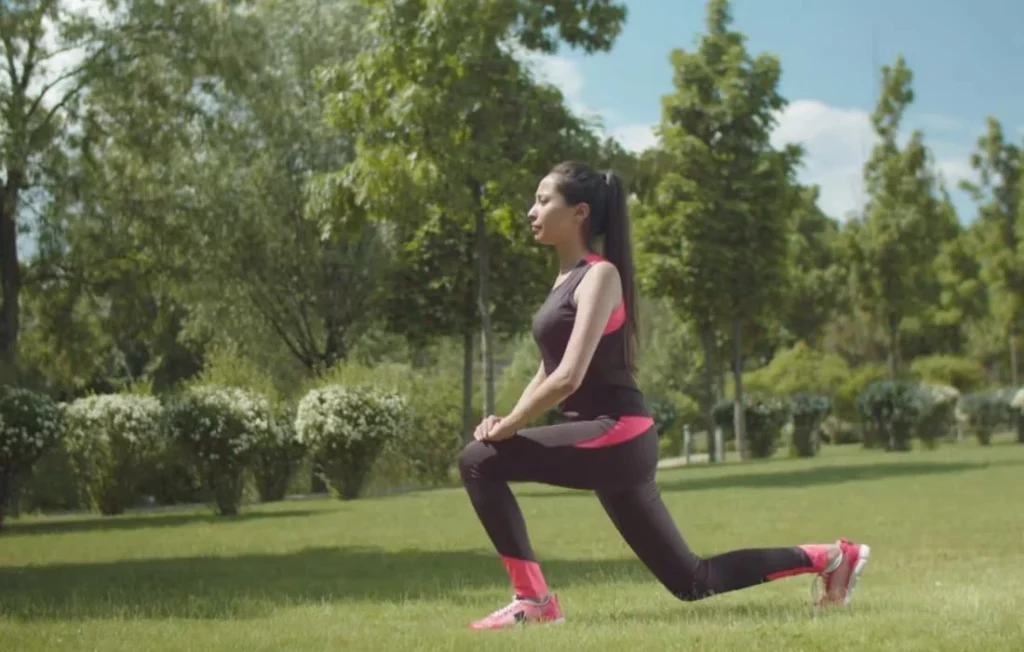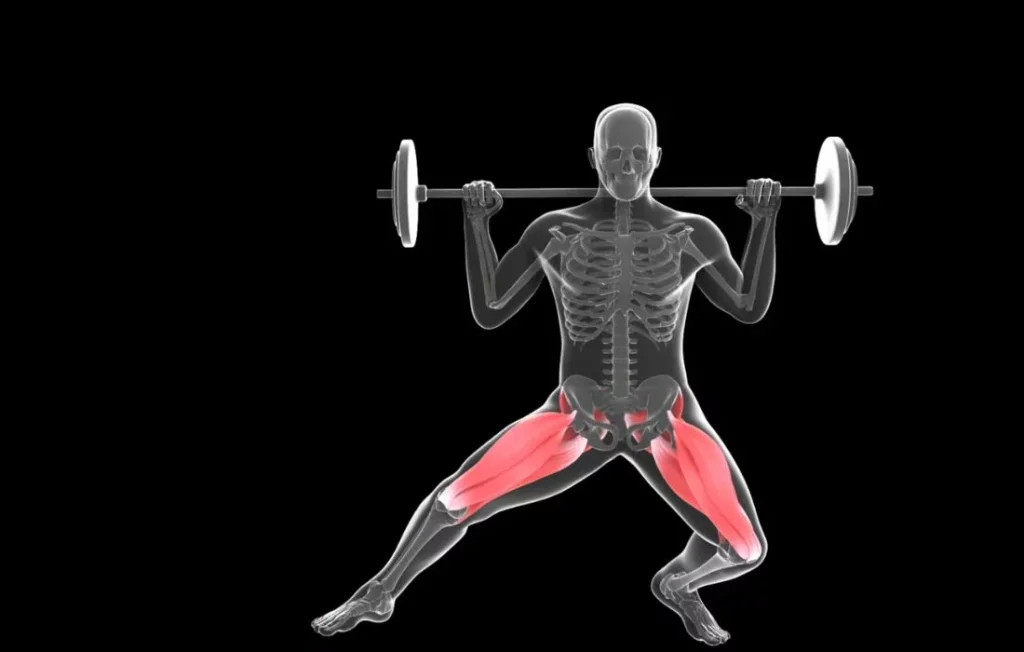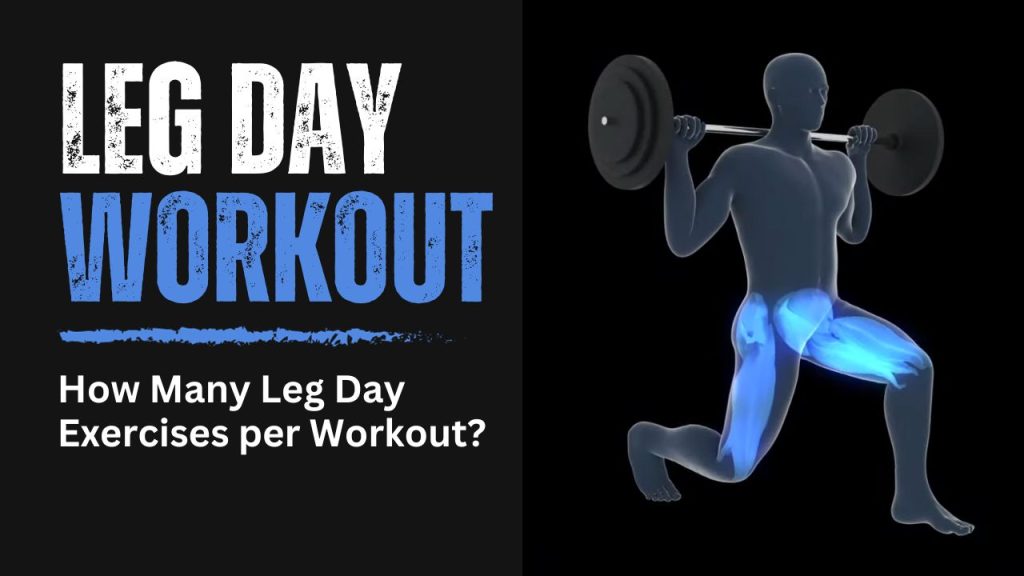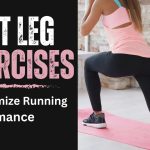In the world of fitness, leg day is often met with mixed feelings. Some enthusiasts can’t wait to tackle it, while others dread it. But one question that plagues many is, “How many leg exercises should I include in my workout?” It’s a valid concern, and the answer depends on various factors. In this article, we’ll delve into the intricacies of leg workouts, helping you determine the optimal number of exercises for your fitness goals. Whether you’re a fan of the gym or prefer the convenience of a Leg Exercise Machine like the Best Leg Exerciser at home, we’ll provide insights to tailor your leg day routine for maximum effectiveness and results.
Determining Your Goals
Before diving into the specifics, consider your fitness objectives. Are you aiming to build muscle mass, increase strength, or achieve better overall leg definition? Your goals play a crucial role in shaping your leg workout routine.
Strength Training vs. Muscle Building
If your primary goal is to increase raw strength, you may focus on compound exercises like squats and deadlifts. These exercises engage multiple muscle groups simultaneously and are excellent for building overall power.

On the other hand, if you’re more interested in muscle growth and aesthetics, a combination of compound and isolation exercises may be the way to go. Compound exercises, such as squats and deadlifts, lay the foundation for overall leg development, engaging multiple muscle groups simultaneously. However, to refine and target specific areas, incorporating Top Leg Lifts Exercises, like leg extensions or calf raises, can be highly effective for achieving hypertrophy and enhancing the aesthetics of your legs.
The Benefits of Multiple Leg Exercises
Your fitness level also dictates your workout structure. Beginners should start with fewer exercises to avoid overtraining and injuries. It’s crucial to educate yourself and Avoid Common Quads Training Mistakes that could hinder your progress or lead to setbacks. As you progress and become more experienced, you can gradually add more exercises to your routine, diversifying your leg day workouts and challenging your muscles in new ways. This gradual approach ensures a balanced and effective leg training regimen that promotes growth and minimizes the risk of overexertion.

Incorporating multiple leg exercises into your routine offers several advantages.
Engaging Various Leg Muscle Groups:
Different exercises target different muscles. For instance, when considering Deadlifts and Muscle Growth, it’s essential to understand that squats primarily work the quadriceps, while lunges activate the glutes and hamstrings. Incorporating a variety of leg exercises into your routine ensures that all your leg muscles receive proper attention and stimulation, promoting comprehensive development and balanced muscle growth.
Preventing Muscle Imbalances:
Focusing on a single exercise can lead to muscle imbalances, which may result in injury. By diversifying your leg workouts, you can ensure balanced development.
Enhancing Overall Leg Strength and Definition:
A combination of exercises challenges your muscles in various ways, leading to improved strength and better-defined legs.
The Drawbacks of Too Many Exercises
While multiple exercises have their advantages, there’s a point where more isn’t necessarily better.

Risk of Overtraining:
Overloading your leg muscles with too many exercises can lead to overtraining. This can cause fatigue, decreased performance, and even injuries.
Diminished Focus and Intensity:
Quality over quantity applies to leg workouts as well. Doing too many exercises may lead to reduced focus and intensity in each one, compromising their effectiveness.
The Importance of Recovery:
Muscles need time to recover and grow. Excessive exercise without adequate rest can hinder progress and increase the risk of overuse injuries.
Finding the Right Balance
So, how do you strike the right balance in your leg workout routine?

Balancing Compound and Isolation Exercises:
Combine compound exercises that work multiple muscle groups with isolation exercises that target specific muscles. For example, pair squats with leg curls to engage both quadriceps and hamstrings.
Incorporating Variation for Continued Progress:
Periodically change your exercises to prevent plateaus. Your muscles adapt to familiar movements, so introducing new exercises keeps your workouts challenging.
Assessing Workout Volume:
Pay attention to the volume of your workouts. This includes the number of sets and repetitions. It’s crucial not to overdo it, especially if you’re including multiple exercises.
Achieving the Ultimate Leg Day Workout
Sculpting strong, toned legs is a fitness goal that resonates with many. Whether you’re new to the fitness world or a seasoned pro, finding the right balance between volume and intensity on your leg day is key to unlocking the legs you’ve always dreamed of. In this comprehensive guide, we’ll delve deep into the science behind leg day and explore the factors that determine the perfect number of exercises for your leg day routine.
Factors Influencing Your Leg Day Routine
The path to sculpted legs isn’t a one-size-fits-all journey. Your leg day routine should reflect your unique goals and circumstances. Let’s take a closer look at the factors that shape your leg day workout:

Training Experience:
Are you a beginner stepping into the world of fitness, or a seasoned athlete looking to fine-tune your leg routine? Your experience level plays a crucial role. Beginners should start with a modest number of exercises to acclimate to the demands, gradually intensifying their workouts over time. In contrast, experienced athletes can handle a more robust workload, pushing themselves further.
Fitness Goals:
The number of exercises you should include in your leg day routine hinges on your fitness objectives. If your goal is to build substantial leg muscle and strength, your routine will likely involve a more extensive exercise selection. On the other hand, if you aim to maintain your current level of leg fitness, a more streamlined approach may suffice.
Time Availability:
We all have busy lives, and time is often a precious commodity. Your workout duration should align with the time you have available. When minutes are limited, focus on compound exercises that engage multiple muscle groups simultaneously. This efficient approach ensures you get the most out of your workout in a shorter timeframe.
Personal Preference:
There’s no one-size-fits-all when it comes to personal preference. Some individuals prefer leg day routines with a higher exercise volume, relishing the variety, while others lean towards fewer exercises with heavier weights, prioritizing intensity. Whether you opt for Bodyweight Exercises for Legs or incorporate weights and machines into your routine, it’s essential to tailor your workout to what you enjoy most. This not only makes your leg day more enjoyable but also increases the likelihood of sticking with your fitness regimen, ultimately leading to better long-term results.
In summary, the ideal number of exercises for your leg day hinges on these four factors. A solid starting point is incorporating 3-5 exercises that target different muscle groups in your legs. Consider classics like squats, lunges, leg presses, calf raises, and hamstring curls. Regardless of the exercises you choose, impeccable form and technique should always take precedence over quantity.
This guide sets the stage for a leg day that’s not only effective but also tailored to your unique needs and goals. Whether you’re building the foundation of your fitness journey or refining the details as an experienced athlete, remember that sculpting the legs you desire is a journey and leg day is a vital chapter in that story.
Recommended Number of Exercises for Different Fitness Levels
Tailoring your leg day routine to your fitness level is crucial for optimal results. Here’s a detailed breakdown of recommendations for different fitness levels:
For Beginners (2-3 exercises per muscle group):
- Start your leg day with 2-3 exercises.
- Begin with compound movements like squats and lunges to engage multiple muscle groups.
- Use moderate weights that allow you to complete 8-12 reps per set with 1-2 minutes of rest between sets.
- Gradually increase the number of exercises and weight as you become more comfortable and proficient.
For Intermediates (3-4 exercises per muscle group):
- Perform 3-4 exercises that target the major muscle groups in your legs, including quads, hamstrings, glutes, and calves.
- Place a strong emphasis on maintaining proper form and technique throughout your workouts.
- Adapt the number of exercises based on your recovery ability and overall fitness level. You can increase or decrease the exercise volume as needed to challenge yourself effectively.
For Advanced Lifters (4-6 compound exercises):
- Achieving the right balance between volume and intensity is crucial for advanced lifters.
- Focus on 4-6 compound exercises that engage various leg muscle groups.
- Utilize heavier weights and lower rep ranges (around 6-10 reps per set) to stimulate muscle growth and strength gains effectively.
- Allow your muscles ample recovery time between workouts to prevent overtraining and promote optimal progress.
Adjusting Volume and Intensity for Leg Exercises
Fine-tuning your leg day routine involves making specific adjustments based on your experience level:
As a Beginner:
- Begin with 1-2 exercises per leg workout.
- Perform 2-3 sets of each exercise with a rep range of 10-15.
- Start with lighter weights to master proper form and technique, gradually increasing the weight as you become more confident.
As an Intermediate:
- Increase the number of exercises to 2-3 per leg workout.
- Aim for 3-4 sets of 8-12 reps for each exercise.
- Begin incorporating heavier weights and consider advanced techniques like drop sets and supersets to intensify your workouts.
As an Advanced Lifter:
- Perform 3-4 exercises per leg workout, focusing on compound movements.
- Target 4-5 sets of 6-10 reps for each exercise.
- Utilize heavy weights and advanced techniques like forced reps and negatives to push your limits and continue progressing.
Common Mistakes to Avoid
To ensure a successful leg day, steer clear of these common mistakes:
- Skipping Warm-Up: Dedicate 5-10 minutes to light cardio, dynamic stretching, and activation exercises to prepare your muscles and reduce the risk of injury.
- Improper Form: Always prioritize maintaining proper form during leg exercises to prevent injuries and maximize their effectiveness. Consider consulting a trainer or watching instructional videos if you’re unsure about your form.
- Lack of Variety: Repeating the same exercises can lead to plateaus. Incorporate a variety of movements such as squats, lunges, deadlifts, and calf raises to keep challenging your muscles and making progress.
- Inadequate Weight: Using insufficient weight won’t provide the necessary stimulus for muscle growth. Gradually increase the weight while ensuring your form remains impeccable.
- Overtraining: Giving your leg muscles sufficient time to recover is essential to avoid fatigue, injury, and stalled progress. Plan your leg day workouts with adequate rest intervals.
Conclusion
In conclusion, when striving for the ideal leg day workout, it’s essential to strike the right balance between volume and intensity, especially when aiming for Exercises to Slim Legs. Your fitness level, recovery capacity, and personal goals will guide the number of exercises you incorporate into your routine. Additionally, don’t forget to focus on aspects like Improving Circulation in Your Legs through proper warm-up and cool-down routines. A well-rounded approach, coupled with a balanced diet, is key to achieving your leg day goals. For those considering the use of specialized equipment like a Leg Exerciser, reading a Leg Exerciser Review can provide valuable insights into their effectiveness. Lastly, remember to share this guide with your gym buddies to elevate your leg day workouts together and achieve fitness excellence.

Chris David (Auther)
With my pen as my compass, I embark on a thrilling odyssey through the intricate landscape of health and fitness. In each blog post, I unveil the enigmatic realms of well-being, weaving together evidence-based wisdom, practical counsel, and a sprinkle of motivational stardust to illuminate your path toward boundless vitality and unwavering strength.


